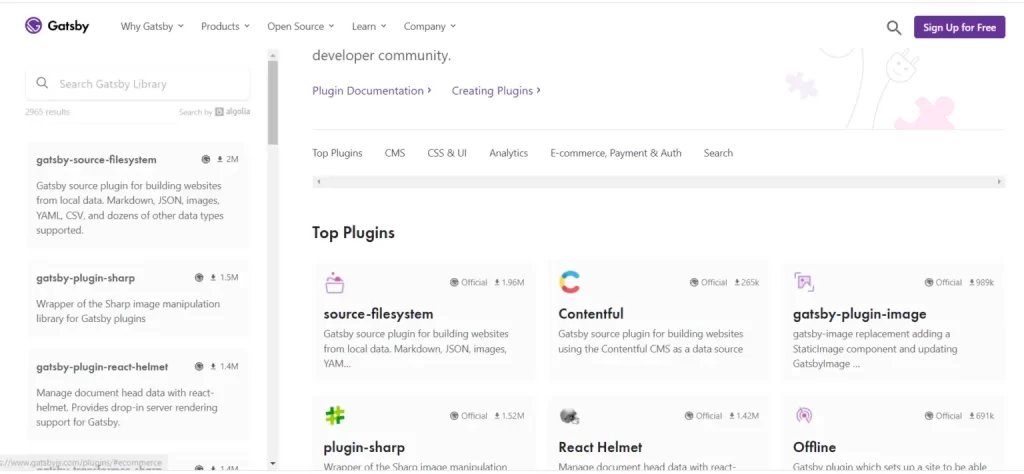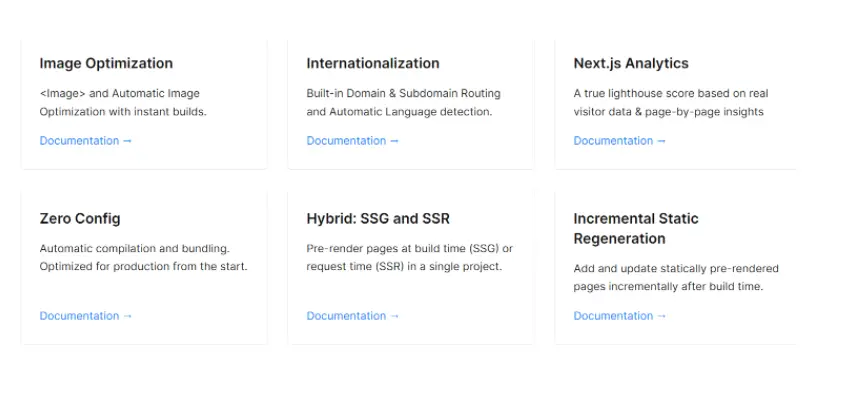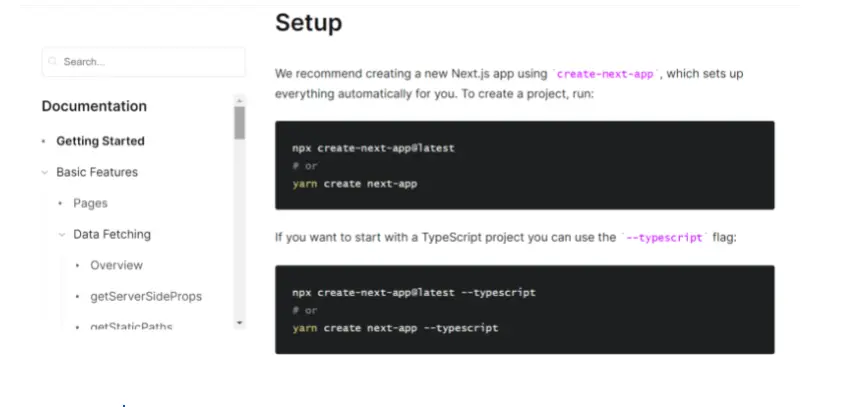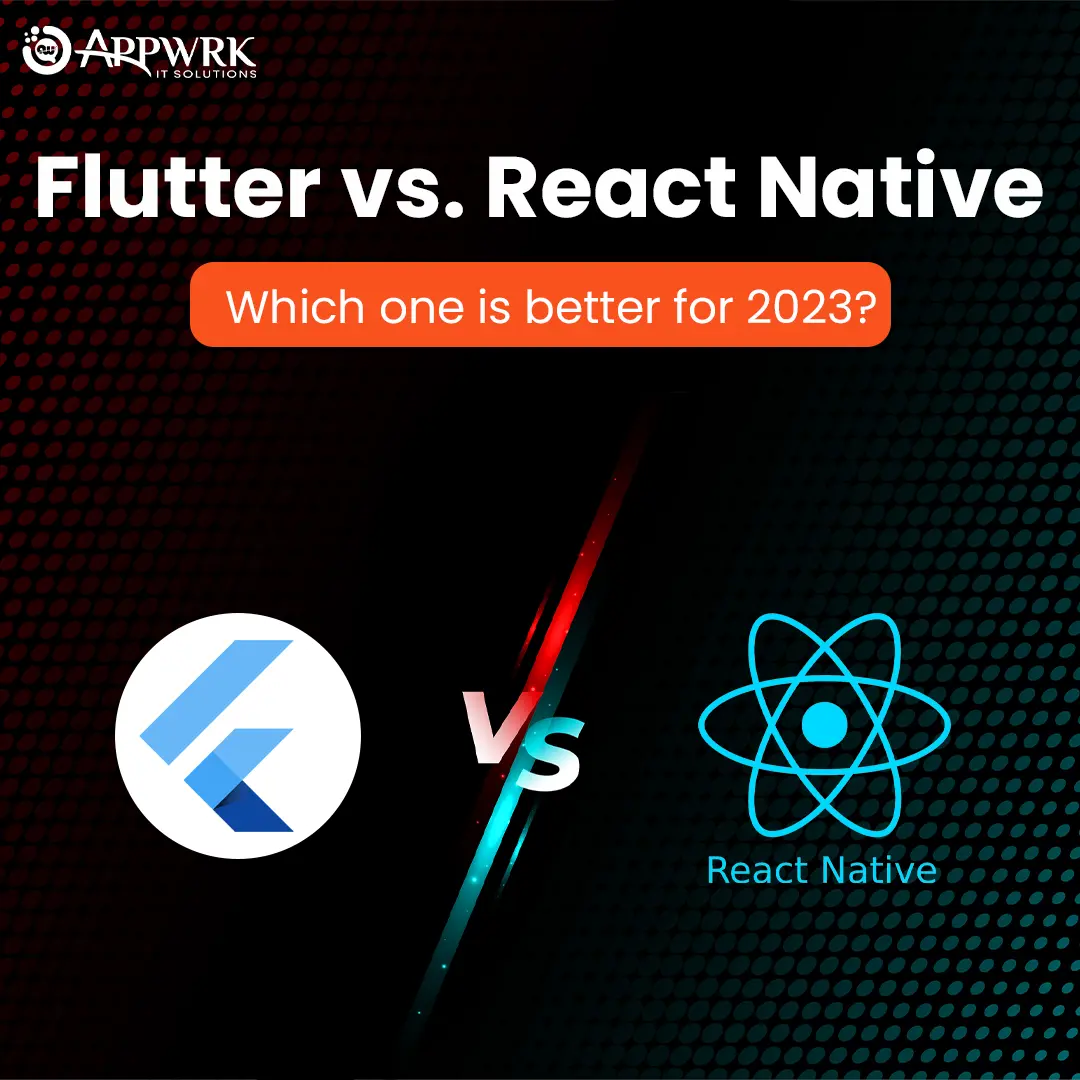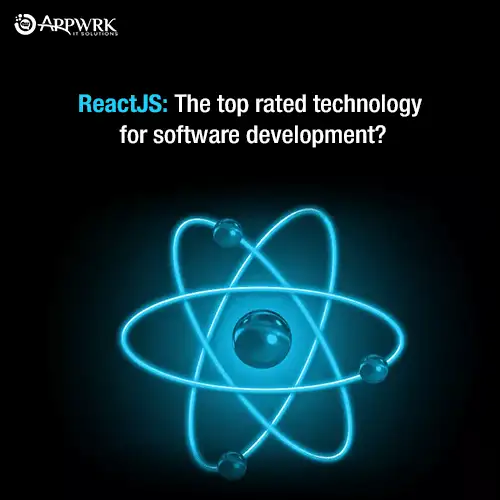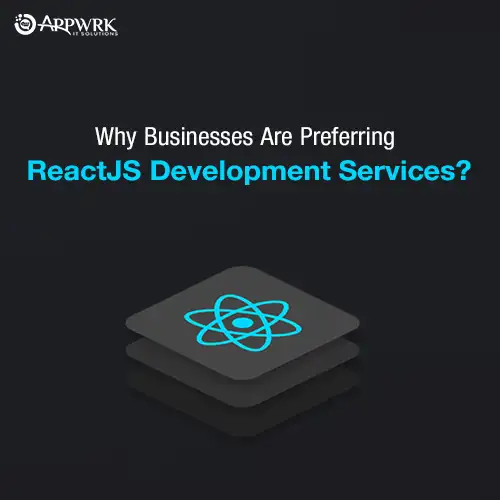Next JS vs Gatsby: Which React Framework to Choose in 2023?
According to Statista, 40.14% of web applications prefer React JS technology compared to other top-notch technologies. Due to this fact, the popularity of React Js has grown to such an extent that it is not only used for the front end but also for building browser games, VR applications, and so on. It is only possible using React 360 and advanced React Frameworks.
Though selecting React as your programming language was quite simple, which framework should you use? There are various frameworks, but today we will explore the two most famous ones.
Gatsby vs. Next.js in 2023- let the fight begin!
Table of contents
- Static Rendering
- Server Rendering
- Next JS vs Gatsby: Learn the Basics
- Next JS vs Gatsby: Strength & Weakness
- Next JS vs Gatsby: Detailed Comparison
- Next JS vs Gatsby: Static sites
- Next JS vs Gatsby: Multi-user site
- Next JS vs Gatsby: Hybrid Application
- Next JS vs Gatsby: What do APPWRK Developers Think?
- Conclusion
- Frequently Asked Question
Before that, let’s go through the little background of Next.js and Gatsby and where they came into action. It is a very known fact that React technology does not come with functionality, in fact, it requires libraries and configurations to implement it. Web applications require certain functionalities like image optimization or page routing. Both these frameworks indeed have enough default functionalities that allow React JS developers to create an entire application without any upfront configuration. With the help of these frameworks, you can easily create websites more efficiently than building websites from scratch.
Now let’s come to the point, Next.js vs Gatsby, which framework is most suitable for your project.
Firstly to be clear, you must know Gatsby is a static site generator tool, and Next JS is a server-side render tool. Let’s discuss these terminologies in detail.
Static Rendering
A static site rendering happens once at build time. It doesn’t use a server. Hence you have to generate a single HTML file for every page the user can access ahead of time.

Server Rendering
In server rendering, HTML dynamically generates on-demand using the server whenever a new request comes.

Check out the Next JS vs Gatsby comparative analysis in the below-given table.

Gatsby vs next will help you understand which rendering suits user requirements and help you save costs involved in website resources. Let’s start with an overview of these react frameworks before comparing them.
Next JS vs Gatsby: Learn the Basics
A general introduction to these frameworks will help you better understand Next JS vs Gatsby quickly and efficiently for your next project.
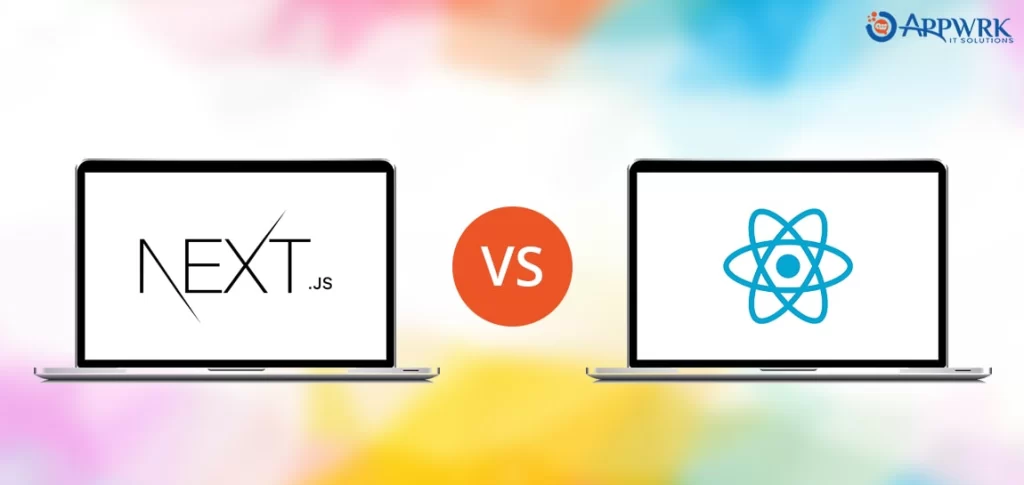
Next JS
It is an open-source JavaScript framework that is built on top of Node.js. Hence, this framework enables React-based functionalities for web applications that include server-side rendering and static website development. Due to its server-side rendering, the burden on the web browser reduces, as HTML is directly generated through the server whenever any new request is received. This framework is best for developing dynamic websites with robust server interaction or large-scale applications.
The three main basic principles of Next.js are SSR, ACS, and HMR.
- SSR (Server-Side Rendering)– It means Next JS makes all user-oriented React components render on the server-side
- ACS (Automatic Code Splitting)– Using code-splitting this framework reduces the size of an app by breaking the code modules into small parts and serving them only when needed.
- HMR (Hot Module Placement)– Next JS enables developers to quickly access changes done during development because it reloads only changed modules and saves time monitoring changes.
Gatsby
Gatsby was launched in 2017 by Kyle Mathews. It is also an open-source framework like Next JS. It is a static site generator that combines the functionality from React, GraphQL, and Webpack into a single tool to build or rebuild PWA with the fastest loading speed. Gatsby is a Static Site Rendering(SSG). It can be connected to any headless CMS (the presentation layer is separate from the body). This framework can be considered a modern front-end that enables speedy page loads by using code-splitting, data prefetching, server-side rendering, etc. It is mainly used to develop a website where the number of pages is fixed and content almost remains static. This framework provides developers to select various ways to build a website because of the extensive availability of numerous Gatsby plugins and themes.
The basic Gatsby principle includes
- High speed of web page loading
- Minimizing risk with no servers and databases.
- Compliant with existing CMS: WordPress, Drupal, etc.
Next JS vs Gatsby: Strength & Weakness
It’s time to match up your requirements and tick the pointers from Gatsby vs Next JS strengths and weaknesses.
Next.js: Strength & Weakness
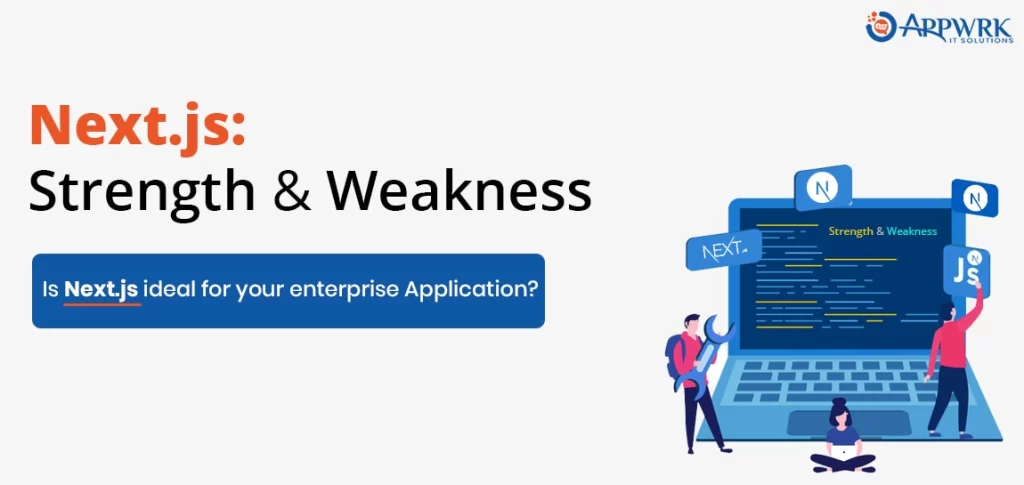
Strength
- Due to its server-side rendering, websites build under this framework go a long way toward increasing your exposure to search engines.
- It comes with great community support.
- It provides flexibility in creating UX and UI.
- It allows you to edit your Open Graph meta names for each page programmatically.
- Next.js enables lazy loading and code splitting, which then increases page loading speed. To make it even more precise, with lazy loading Next.js does not load all the modules in one go; instead, load it on demand. Only required modules load initially and the remaining modules-load when you move to a particular page or section. That is why the page loading speed is increased.
Weakness
- It has a poor plugin ecosystem.
- It is restricted to using only a file router, in case you want to use a router other than its own, you will find it’s not that flexible.
- If, later on, you want to use a router other than its own, you will find that it is not so versatile.
- As this framework supports the static building of the entire website, for apps having more pages, the build time may be very long.
Gatsby: Strength & Weakness

Strength
- It provides a fast page loading speed.
- Gatsby’s websites are search engine optimized due to their incredible performance and the way they are optimized to help robots scan their content.
- The hosting and maintenance cost of the Gatsby website is low.
- Gatsby is a static site generator, and static websites are somehow more secure than dynamic websites.
- It comes with well-structured and easy-to-understand documentation.
Weakness
- If there is a lot of content, generating a Gatsby build a static website will take a long time.
- As updates won’t be visible instantly, you have to update content a lot.
- Due to the slightly complicated nature of this framework, just fewer developers are interested in building applications using it.
Next JS vs Gatsby: Detailed Comparison
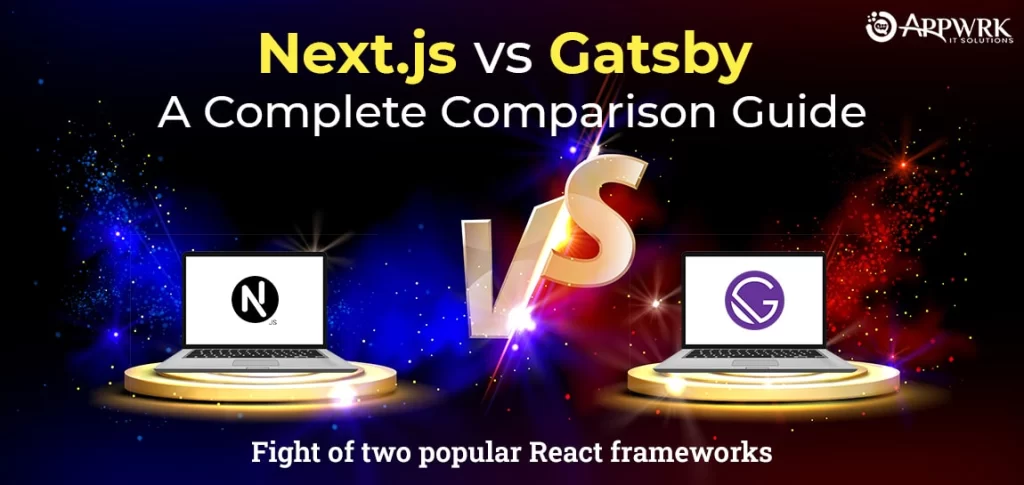
Let’s cover all the aspects of Next JS vs Gatsby in detail, which will help you to find out the perfect framework for your business solution.
Mode of Gatsby vs Next JS Comparison
- Data Handling
- Extensibility ( Plugins, add-ons, and libraries)
- Documentation
- Scalability
- Community
- Hosting
- SEO(Search Engine Optimization)
- Data Security
- Infrastructure
Data Handling
When it comes to data handling, especially images, the Gatsby framework is commendable. It offers a massive plugin library that extends its functionality. For instance, Gatsby images can be resized. Also, it offers lazy-loading functionality. On the contrary, Next JS users decide on their own architect for managing data. Like Gatsby, Next JS also requires backend solutions to handle data and content to generate pages dynamically.
So, in Next.js vs Gatsby, consider Gatsby for fewer data changes and Next.js for data changes at a high rate.
Extensibility ( Plugins, add-ons, and libraries)
Both these React frameworks easily integrate with other tools and extend the capabilities of your app easily. You can quickly implement your integration in both, but in Gatsby vs Next JS, Next.js takes more time than Gatsby. Just like WordPress, Gatsby has a vast ecosystem of plugins that enable developers to add any desired functionality to the app. Some examples of capabilities available in the Gatsby plugin library are- adding in the TypeScript compiler, Compressing images, using a pre-built theme, etc. If you desire any custom themes or functionality, you can easily create them and host them in the plugin library. Look at some of the top plugins of Gatsby.
As Next JS was created by Vercel, a popular deployment, and collaboration platform, this framework has an incredible ecosystem of partner tools. However, various functionality comes default with Next.js that was earlier difficult to add to React manually, such as image optimization, page routing, and code splitting. Next.js also works well with other tools and libraries you already use for styling, hosting, and building, making it easy to incorporate them into your tech stack. So, in Next JS vs Gatsby, Next.js provides many tools for the best developer experience and you can customize your app with some amazing tools.
Check out the top tools of Next JS in the below image
Documentation
When we talk about Gatsby vs Next JS, both Gatsby and next.js come with lots of tutorials and comprehensive documentation. Hence getting started with these two React frameworks is quite easy if you have already worked with React-based projects. Everything is included in its documentation, from learning the basics to creating a Gatsby site.
Similarly, Next JS documentation has covered every point, including image optimization, static file serving, data fetching, manual setup, etc. You don’t have to reach out to any other person. Everything you need to get started with this framework is available in its documentation.
Scalability
Let’s check how large you can expect to grow your app build in the future by analyzing Gatsby vs Next JS scalability functionalities. Gatsby is a good choice for personal blogs and smaller static sites, but when app size increases in the future, it becomes relatively slow during builds or may not build at all. Check out the Scaling issue on the documentation page of Gatsby; it is mentioned that an app is considered as large if it has more than 100k pages or when a large amount of data is fetched from the GraphQL API. Although Gatsby’s connection with GraphQL allows users to create static web pages quickly, they might not be good at scaling. On the other hand, although Next JS can require enough technical skill to slow down development, it is powerful enough to scale for enterprise use. Hence if we consider Next JS vs Gatsby, Next.js is the best choice for building large enterprise-scale applications.
Community
Community and support are crucial parameters when comparing Next JS vs Gatsby. Talking about Next.js, its parent company Vercel hires ambassadors that regularly update and add high-quality content for the community. Check out the blog, Twitter, and YouTube channel of one of them (Lee Robinson). You will find valuable information out there. Even Gatsby is doing a great job of community building. You can quickly get your solution via chat. But on comparing Gatsby vs Next JS, Next.js is leading in terms of community support due to the availability of many resources.
Hosting
After building your app with Next JS vs Gatsby, let’s see where we can host them. The Next.js static site generates static assets that can be hosted anywhere. But what about server-side rendering, which needs a proper server to host it? Well, the server-side rendering sites are supported by various hosting platforms such as AWS, Firebase, and Netlify. If you are learning for the first time, watch the tutorials specific to server-side rendering hosting before moving further. Learn how to host the Next.js app(SSR) on AWS Amplify.
As Gatsby generates static assets, you have the flexibility to choose which hosting platform is perfect for you. For example- you can go with any one of these hosting- Azure, AWS, Netlify, or some other, whichever you desire. Hence, For Gatsby vs Next JS, Next.js hosting demands a learning curve while Gatsby doesn’t require so.
SEO(Search Engine Optimization)

Although applications built alone with React are not SEO friendly, let’s see, are Next JS and Gatsby good at SEO or not? Next.js is optimized purely for server-side rendering. This framework builds server-side rendering using JavaScript with Node.js as the runtime server. In Next.js page is created when the browser requests it(as discussed earlier, dynamic rendering). All your website information, such as pages, data, and routes, is stored on the server. When you navigate to the Next.js page from your browser, the server finds the page you requested. The page is built, data is sent to the browser, and the user can see them now. Hence, due to dynamic rendering, sites are updated various times a day, like e-commerce stores and online forums, which is good from an SEO point of view.
While in Gatsby, before deploying, your code goes through a build process. The entire HTML site is prebuilt before it even gets a browser request. Whenever a user requests a page built in Gatsby, this framework locates the page’s HTML file in your build folder and rehydrates it to make it into whole react applications. The build processes must run again for the CDN to make recent updates. That’s why Gatsby is a good choice for sites that don’t change much, such as landing pages, blogs, company sites, etc. All in all, if you compare Next JS vs Gatsby, both Next JS and Gatsby have many good points for making an SEO-friendly website using React.
Data Security
Although Next.js CMS and APIs have private features, data is still present in the server. Hence there are chances for exploitation. While in the case of Gatsby, the needed information is only taken from the source. Thus it is pretty secure, and we can say that Gatsby wins over Next.js in Gatsby and Next JS comparison regarding data security.
Infrastructure
In Next.js, you have to set up servers with maintenance, databases, etc. On the other hand, in Gatsby, you can simply pre-render on a build and use a CDN in order to create superfast websites. Let’s move on to discuss the usability of both Next JS vs Gatsby.
Next JS vs Gatsby: Static sites
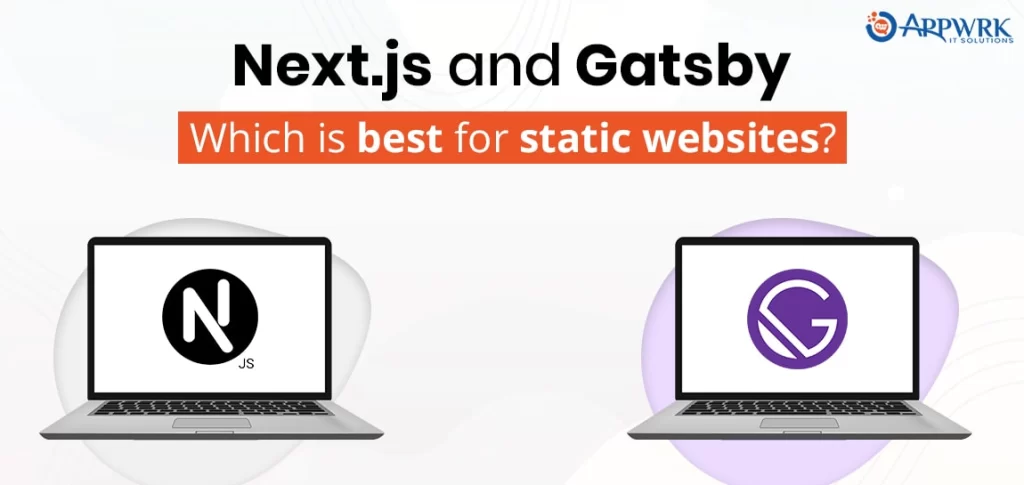
A static website is a collection of separate HTML pages, where each page represents a physical webpage, for example, a personal blog. Each user visiting the static website will find the same content, and updates are not visible in real time. The number of pages is pre-defined on the static websites; however, you don’t need to render pages through the server all the time.
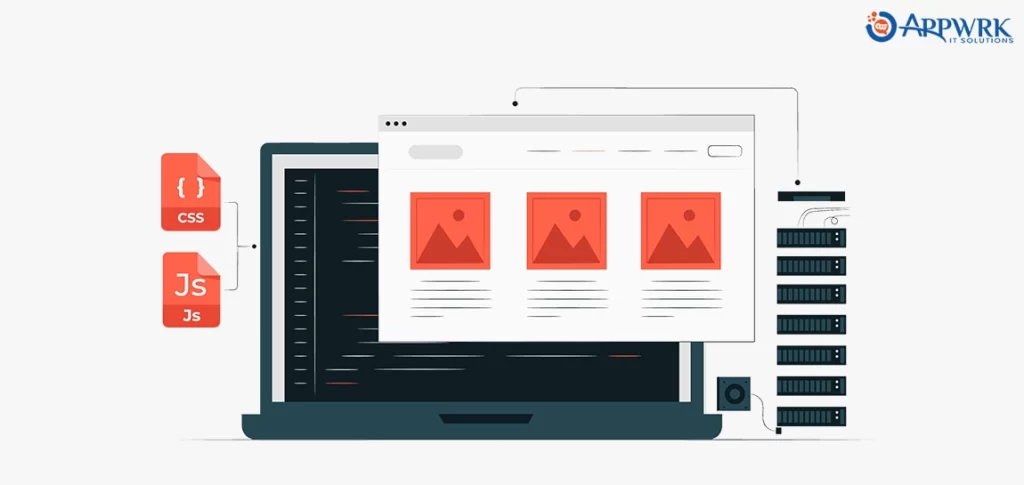
Though you can build static websites through Next JS with the help of its static export feature still, Gatsby is considered an all-time preferred choice. Let’s find out how.
Gatsby isolates data and websites, which means other team members, along with developers, can also edit the content on web pages which is compiled during run time. Gatsby offers support to connect to a CMS, database, GraphQL, and REST APIs via the plugin, which supports different data formats like JSON, Markdown, and MDX.
Whereas in Next.js, you will need to create your own way to fetch data and reflect it as a website. However, non-programmers can’t update the changes alone; they will need the help of technical experts.
Hence, we can say that Gatsby is the clear winner between Gatsby vs Next JS as it offers an option to create and host websites easily and efficiently.
Next JS vs Gatsby: Multi-user sites
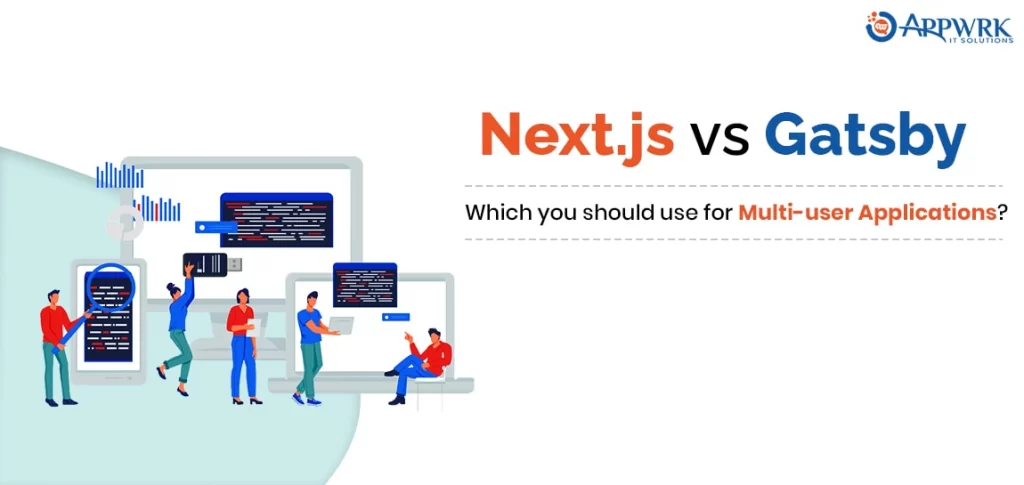
In multi-user websites, numerous users join at any instant and comment on the content page, so the content needs to be updated in run time. For building such sites which framework is the best choice? Let’s dig deeper and figure out Next JS vs Gatsby. In multi-user websites, you have to show unique and dynamic content to each logged-in user. Each user can see the content just after creating it on the website. Only server-side rendering can handle the update of different users based on authentication. All users want to see their content in real-time, and with Gatsby, more time is taken to build all such processes. Nex JS is perfect for such needs since many users update the content, so compiling a static HTML for each user with Gatsby is not possible. But it is pretty easier to show the content in runtime with Next JS.
Next JS vs Gatsby: Hybrid Application
For building hybrid apps, we need to handle data to CSR and page UI using SSR. So, what, according to you, will offer the ultimate result? Here, if you believe that Next.js is a clear winner in Next JS vs Gatsby, then You understood the two frameworks clearly.
Even if you are still confused, don’t worry! Here’s the explanation.
This framework offers the best of both worlds- renders pages UI using server-side rendering and then hand off the data responsibility to the client-side React web application. Most social networks and community-based websites are hybrid in nature, for example, Twitter. If you check your Twitter page without logging in, you will find that it loads the initial tweets via SSR. If you scroll down further, it loads the next set of tweets through the client side, and while logging in, it loads the app shell initially; then, client-side JavaScript loads the tweet content.
Next JS vs Gatsby: What do APPWRK Developers Think?
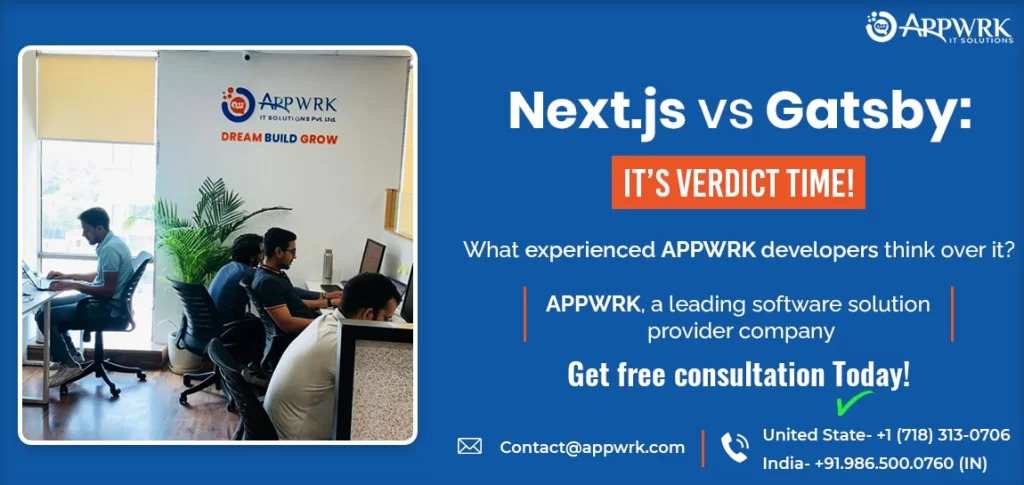
When you consider Next JS vs Gatsby, there are some similarities besides differences. Those are:
- Setting up both frameworks is easier, with comprehensive documentation and tutorials.
- If you have already worked with React, then the learning curve for both these frameworks is easy for you.
- As they both offer hot-reloading, both Next JS and Gatsby enable faster development.
- Code-splitting and code optimization are done default for both these frameworks with built-in routing.
Although with all these similarities, both the react framework have their own use case where they perfectly fit. APPWRK developers have worked on both frameworks to build various applications for businesses of all sizes. So based on their experience, here is what they suggest
- Next.js is a good fit– If you are working on a project that requires handling lots of content and content also growing timely, Next JS is definitely the best choice. When you combine these framework features with a headless CMS, it becomes highly flexible.
- Gatsby is a good fit- When you are developing a smaller application or else that will pull directly from a compatible CMS. If the project is already on the smaller side, then Gatsby is easier to set up, reducing the development time.
Conclusion
As we have seen, both these React Framework have their unique features, usability, strength, and weakness. So, use and enjoy their beauty in your way! Hence Next JS vs Gatsby: which is the right choice?
The answer to this most wanted question depends on your application needs. Understand your business requirements, such as if you need a website just to display static content and not have frequent changes or else you want an application that can uphold tons of traffic in the future. However, to ease your decision regarding Next JS vs Gatsby, we have concluded that;
Use Next.js while building:
- Client-side rendered applications
- Big eCommerce websites
- Finance websites
- Web portals
- Large multi-user websites
- SaaS and B2B websites
Use Gatsby while building:
- Static content websites
- Highly secure websites
- Progressive web apps
- Documentation websites
- Personal blogs or Portfolio websites
- SEO-friendly websites
- Headless CMS-compatible websites
We believe that this write-up will help you choose the perfect React framework for your enterprise application. Consult or Hire React Developers anytime if you want to enhance your learning in Next JS and Gatsby or need help with development.
Frequently Asked Question
A: Yes, we can use this framework to create full-stack React applications. For the server-side view of the app, Next.js uses as the backend, and for client-side functionalities, it works as the front end.
A: There is no comparison between these two as both are different and have their own pros and cons. One Gatsby is a React-based framework, mainly used as a static site generator. While the other, WordPress, is a CMS solution and website builder. Both are free to use to some extent.
A: Gatsby is faster if we consider Gatsby vs Next, as this framework prefetch the content in the background even before the user actually makes requests through browsers. This prefetching of data makes your site lightning fast.
A: Yes, Next.js is superior for SEO because it utilizes server-side rendering, and hence apps take less time while loading for the first time. Additionally, search engines crawl these sites and apps more easily.
About author
Whether you are planning a start-up or want to enhance your existing business, APPWRK is a one-stop solution to satisfy your goals and expectations. We have action-oriented experience in UI/UX, Mobile, and Web App development. Also, you can knock on our door for Quality Assurance and Digital Marketing services.
Book A Consultation Now!



